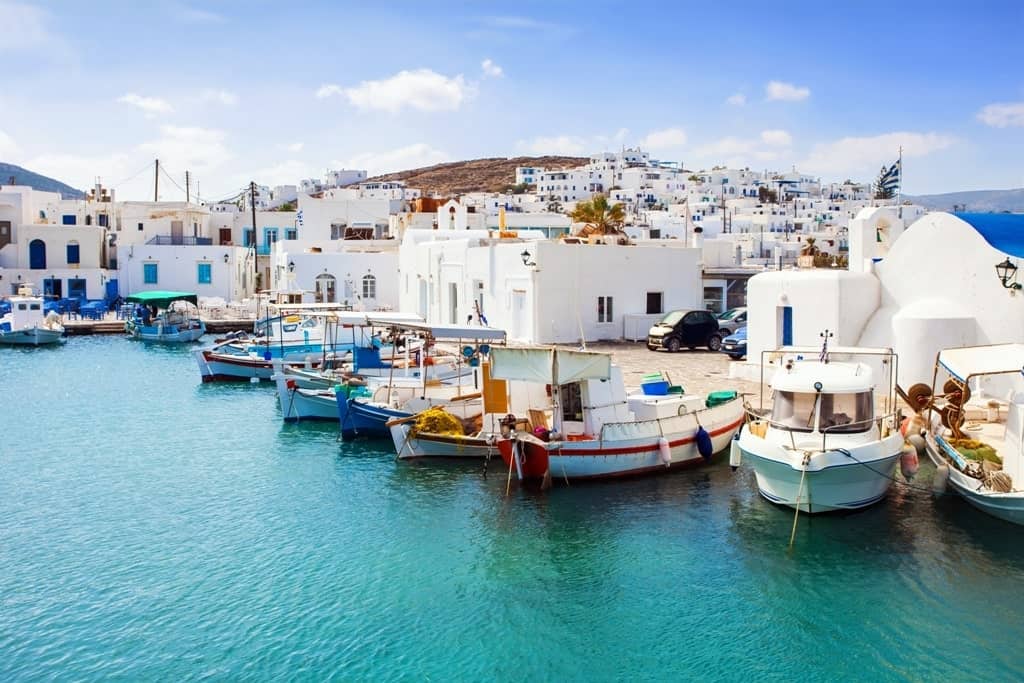Athens, the capital of Greece, is a city steeped in history and culture. From ancient landmarks such as the Acropolis and the Parthenon to modern-day hotspots like Monastiraki Flea Market and the trendy neighborhoods of Psyri and Gazi, there’s something for everyone in Athens. Here’s a 4-day itinerary that will help you make the most of your time in the city and explore both its ancient and modern highlights.
Day 1: The Acropolis and the ancient city

Start your day by visiting the Acropolis, the city’s most iconic landmark. This ancient citadel, located on a hilltop in the center of Athens, is home to several ancient buildings including the Parthenon, the Temple of Athena Nike, and the Erechtheion. Take a guided tour of the Acropolis to learn about the history and significance of these buildings and admire the views of the city from the top.
After visiting the Acropolis, head to the nearby Acropolis Museum, which houses artifacts and sculptures from the ancient citadel. The museum is a must-see for anyone interested in ancient Greek history and culture.
In the afternoon, walk down the ancient city of Athens and visit the Agora, the city’s ancient marketplace. Here you’ll find the ruins of several ancient buildings including the Temple of Hephaestus and the Stoa of Attalos. Take a guided tour of the Agora to learn about the history and significance of these buildings and how they were used in ancient times.
Day 2: Monastiraki Flea Market and the trendy neighborhoods

Start your day by exploring Monastiraki Flea Market, a popular destination for shopping and people-watching. The market is located in the historic neighborhood of Monastiraki and is known for its vintage clothing, souvenirs, and traditional Greek products. Take a stroll through the market, browse the shops and pick up some souvenirs.
After visiting the market, head to the trendy neighborhoods of Psyri and Gazi. These neighborhoods are known for their vibrant nightlife, trendy bars and restaurants, and street art. Take a walk through the streets and admire the colorful buildings and murals, and stop at one of the many bars or cafes for a drink or a bite to eat.
Day 3: The National Archaeological Museum and the National Garden

Start your day by visiting the National Archaeological Museum, the largest archaeological museum in Greece and one of the most important museums in the world. The museum houses a vast collection of artifacts from ancient Greece, including sculptures, pottery, and jewelry. Take a guided tour of the museum to learn about the history and significance of these artifacts and how they were used in ancient times.
After visiting the museum, head to the National Garden, a peaceful oasis in the center of Athens. The garden is home to a wide variety of plants and trees, including a large collection of cacti and succulents. Take a stroll through the garden and admire the plants, and if you’re lucky, you might even spot some of the resident peacocks.
Day 4: The Panathenaic Stadium and the Plaka neighborhood

Start your day by visiting the Panathenaic Stadium, an ancient stadium that was built in 330 BC and was the site of the first modern Olympic Games in 1896. The stadium is still used today for sports events and concerts. Take a guided tour of the stadium to learn about its history and significance and admire the views of the city from the top.
After visiting the stadium, head to the Plaka neighborhood, the oldest neighborhood in Athens. This charming neighborhood is known for its traditional Greek architecture, narrow streets, and small shops. Take a stroll through the streets and admire the colorful buildings, and stop at one of the many tavernas for a traditional Greek meal.
End your day by visiting the Theater of Dionysus, the birthplace of Greek theater. The theater is located at the foot of the Acropolis and is one of the oldest theaters in the world. Take a guided tour of the theater to learn about its history and significance and see how it was used in ancient times.
In conclusion, Athens is a city that offers a unique combination of ancient and modern highlights. Whether you’re interested in ancient history and culture or trendy neighborhoods and nightlife, this 4-day itinerary will help you make the most of your time in the city. By visiting iconic landmarks such as the Acropolis and the Parthenon, exploring the city’s ancient and modern neighborhoods, and experiencing traditional Greek culture, you’ll get a taste of what Athens has to offer.








